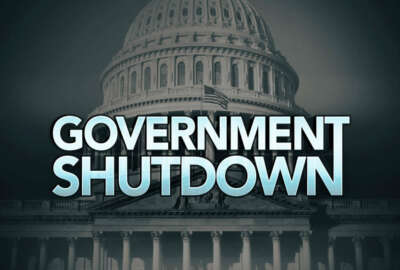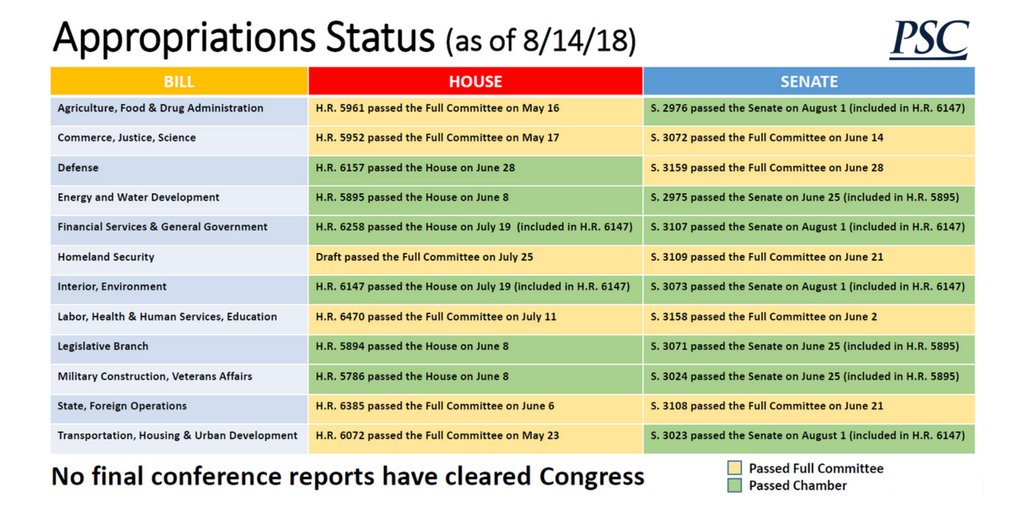

Congress is further along in the annual appropriations process than it usually is at this point in August, but that doesn't mean contractors should drop plannin...
As 2018’s two brief government shutdowns taught us, it’s nearly impossible to plan for the confusion that comes with the annual dash to fund the federal government past Sept. 30 and beyond.
As usual by this point in August, time is limited. The Senate is planning to spend the rest of August and most of September on Capitol Hill. The House has less time, about 11 scheduled, legislative days when it returns from summer recess after Labor Day before the fiscal 2018 ends.
Congress has until 11:59 p.m. on Sept. 30 to pass some sort of spending measure to avoid a government shutdown. And even if lawmakers do find a temporary solution by the end of September, agencies and contractors could face the possibility of a shutdown later in the year, as they did twice this winter.
President Donald Trump has again made numerous threats about the prospect of a government shutdown in the fall over a lack of funding for a wall along the U.S. southern border.
Still, Congress has completed more of its work today as part of the annual appropriations cycle than perhaps it has at this point in prior years in recent memory.
“We’re in better in shape than we’ve been probably for about 12 or 13 years,” Professional Services Council President and CEO David Berteau told the organization’s members and the media Wednesday afternoon. “Every single one of these 12 appropriations bills has at least passed its committee and then reported out of committee to the floor.”
In what’s become an almost annual tradition, PSC conducted an informative session for its members about how they can prepare for the unknowable ahead of the end of the fiscal year.
The Senate has already passed seven of its own appropriations bills so far; the House has passed six.
The House and Senate, however, haven’t yet conferenced over any of these appropriations bills, meaning that in same cases, both chambers still have some lingering differences to sort out. The issue of a federal pay raise and IT modernization funds are two of those issues.

“We are in a position where we can hope for some appropriations to be enacted before the start of the fiscal year,” Berteau said. “It is a theoretical possibility. The likelihood that any such appropriations would be passed absent a deal on all of them is rather slim.”
An omnibus or continuing resolution are perhaps the most likely outcome come Sept. 30, though Senate Majority Leader Mitch McConnoll (R-Ky.) has expressed a desire to pass each of the 12 appropriations bills in regular outcome.
Regardless of the outcome, it’s only “prudent” to begin planning for the unknown. Here’s what contractors should know in advance of a potential lapse in appropriations.
Like parts of the government, not all contracting work will come to a complete halt during a lapse in appropriations.
Contracts that live on multi-year funding may continue during a lapse in appropriations. “Severable services,” or contracts that agencies set with a company to perform a single undertaking with a specific deadline, could also be unaffected, said Alan Chvotkin, PSC’s executive vice president and counsel.
Companies should also review their contracts’ options. Some may expire by Sept. 30, while others may expire during other parts of the year and could also face uncertainty during a lapse in funding.
During a lapse in appropriations, contractors should generally continue to work unless otherwise told not to. Specifically, companies should look for a specific “stop-work” notice from their agencies, which will serve as official direction, Chvotkin said.
Agencies can issue these stop-work notices at any time during a lapse in appropriations. A notice may come during the first or fourth day, for example, of a government shutdown, Chvotkin noted.
It’ll be tough to get specific answers from an agency contracting officer in the days prior to a government shutdown, but any preparation that contractors can do in advance will be helpful.
“It’s not uncommon that even the federal employees, even [at] the senior levels, will have no insight into how the government is likely to respond, because they’re waiting for that specific direction from the Office of Management and Budget and otherwise will not be engaging in shutdown conversations,” Chvotkin said. “While we have a desperate need and a desire for more information, you just have to be a little creative in trying to ask the right set of questions.”
Communicating with contracting employees will be a difficult task during a shutdown, as directions from the agency may change at any time.
Some contract employees might not have access to agency buildings or databases, and it may be tough to reach the appropriate contact at the department for more information.
Contractors could find other ways to keep their employees busy during a stop-work notice and mitigate the impacts of a shutdown as much as possible. While companies could ask their employees to work “at risk,” it’s generally not a practice that’s encouraged, Chvotkin said.
Instead, look to keep employees busy with company training or other work, or ask workers to use leave or vacation time during some or all of the shutdown.
Furloughs should generally be a last resort, Chvotkin said.
Copyright © 2024 Federal News Network. All rights reserved. This website is not intended for users located within the European Economic Area.
Nicole Ogrysko is a reporter for Federal News Network focusing on the federal workforce and federal pay and benefits.
Follow @nogryskoWFED

